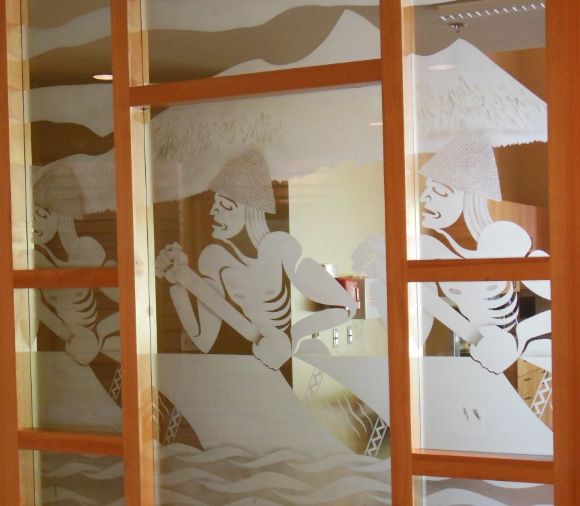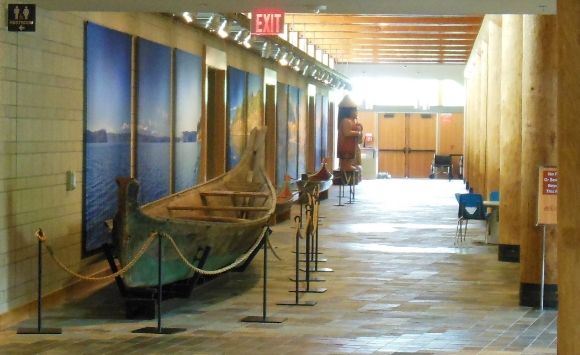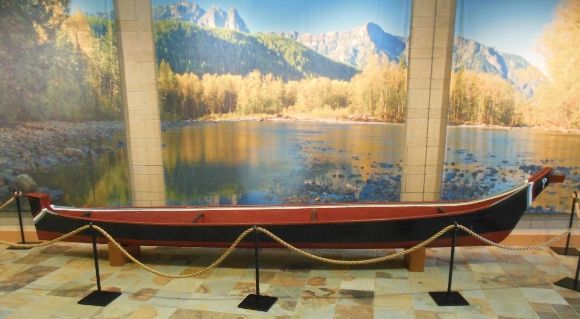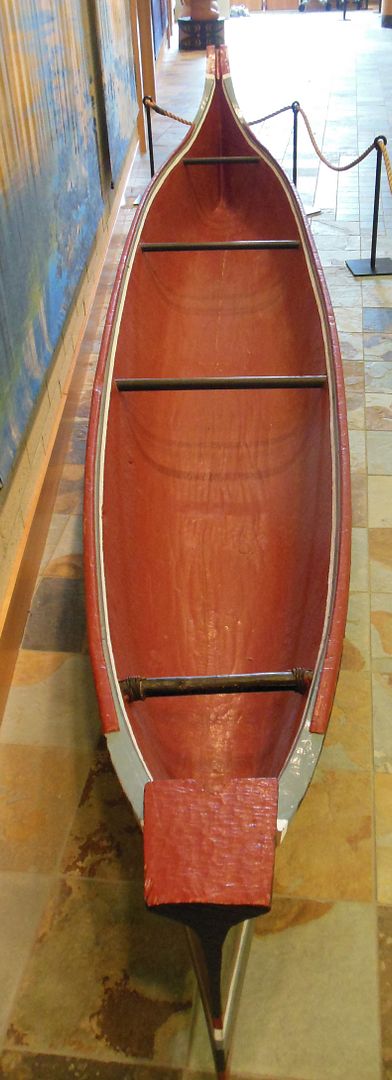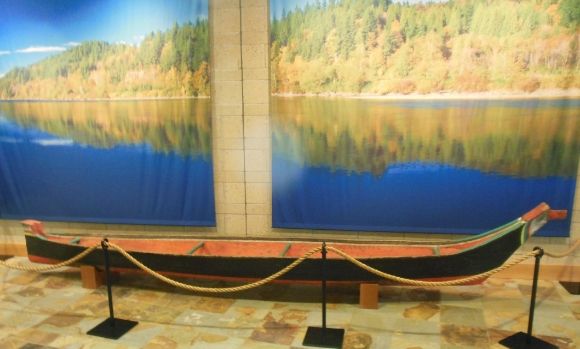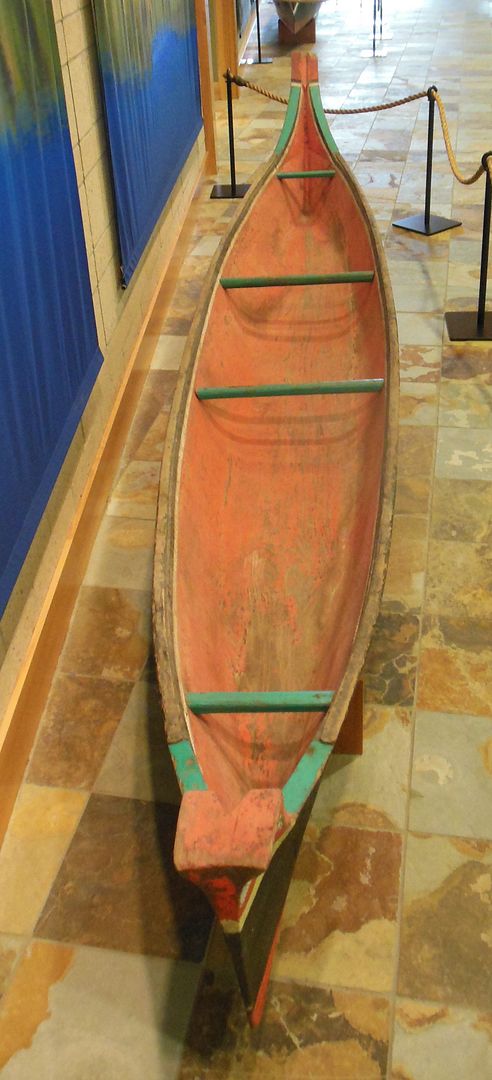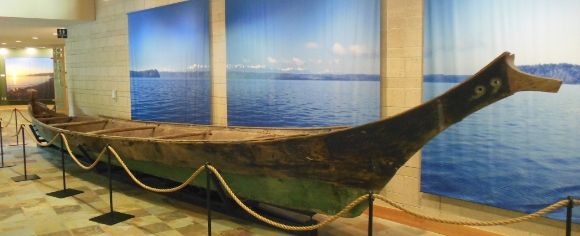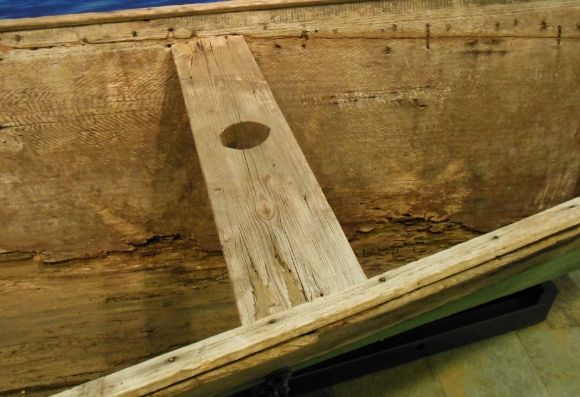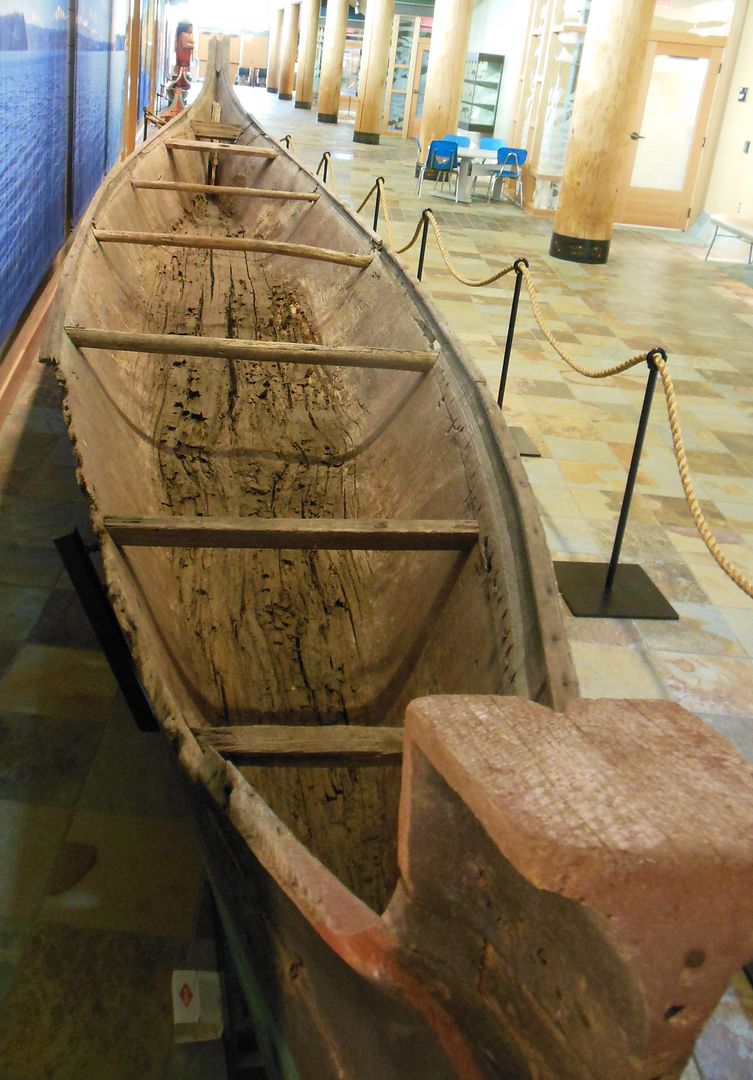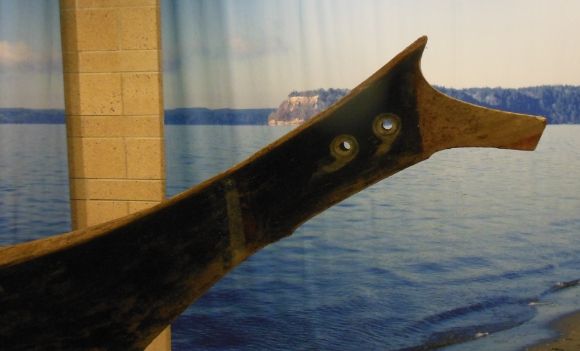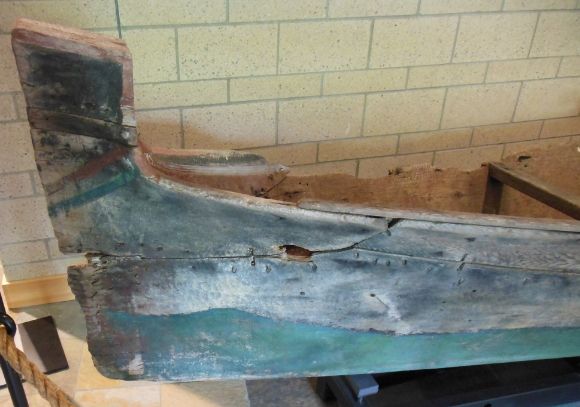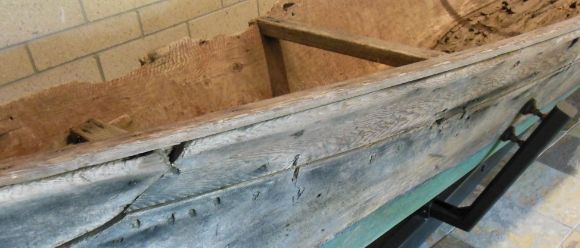By Ojibwa for Native American Netroots
For the Salish-speaking tribes of the Washington coast, canoes were traditionally not only their most important form of transportation, they were also cultural icons. The Hibulb Cultural Center and Natural History Preserve honors the Tulalip (Snohomish, Snoqualmie, Skykomish, and others) cultures.
The importance of canoes to the Tulalip peoples is evident in the Hibulb Culture Center. The canoe theme shown in the windows above is repeated throughout the Center.
Canoes were made by hollowing out a single log with fire and adzes. By filling the hollowed out log with hot water, the canoe makers could then widen the canoe by forcing stout cross-pieces between the gunwales.
Carving a canoe begins with spiritual preparation: the carvers must prepare themselves with fasting, prayers, and the sweatlodge. It is not uncommon for the task of carving a large canoe to take two years. Once the log is chosen, a prayer is said for the cedar and an offering is given to thank it for its sacrifice.
The final stage in carving the canoe involves the use of hot rocks and water to steam-bend the sides outwards. This steaming also draws the bow and stern upwards as well as adding strength to the vessel. For the large ocean-going canoes, the prow and stern pieces are added last, the thwarts and seats are installed, and the exterior is finished. Then the canoe is given a name and is ready to begin its life on the water.
Three canoes are displayed in the Center.
River Canoe:
The river canoe shown above was carved about 1880 by William Shelton. It was restored by the Tulalip Tribes Carving and Arts Department.
The bow of the canoe is shown above.
Small Canoe:
This small canoe was carved about 1930 from a single log by William Shelton.
Ocean-Going Canoe:
This canoe was made about 1880 as part of a wedding dowry. The canoe was built by the bride’s family from the Quinault Nation and given to the Tulalip groom is a wedding present.
Shown above is a detail of where the mast would have been placed. Sails, prior to the arrival of the Europeans, were made from woven mats.
The canoe was made from hollowing out a single large cedar log. The sides were then spread apart and the bow and stern pieces were then added.
The bow is shown above.
The stern of the canoe is shown above. The stern piece was added to the dugout form.
The photograph above shows the additional piece which was added to the gunnels.
The photograph above shows how the thwarts (i.e. seats) were attached.


